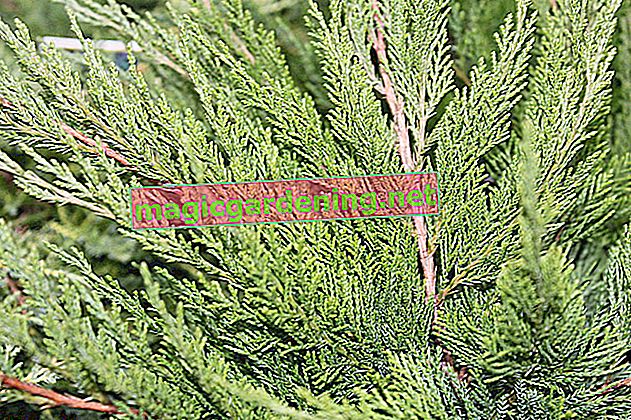
Toxicity of Juniperus species
All species in the genus contain essential oils that are classified as toxic. They are made up of various hydrocarbons and phytochemicals that can cause irritation when they come into contact with the skin. If poisonous fruits or parts of plants are eaten, various symptoms can arise.
also read
- What is the difference between juniper and sad tree?
- These are popular types of juniper
- Juniper as a ground cover - suitable species and demands
Consumption leads to:
- Pain in the kidneys
- Damage to the liver
- increased heart activity
- faster breathing
Common juniper
In contrast to related Juniperus species, not all parts of the plant in Juniperus communis but fruits and needles are slightly poisonous. The concentration of the poisonous essential oils varies depending on the degree of ripeness. Therefore, the berries should only be used in small amounts as a spice in dishes. Usually an adult has no tolerance issues. If you experience stomach pain or nausea, increasing your fluid intake may help.
Sadebaum
This low-growing juniper is highly poisonous in all parts of the plant and especially in the shoot tips and fruits. In the past it happened quite often that the harvests of juniper berries were mixed with fruits of the sade tree. These contaminated crops were used to make gin. State controls have been introduced, at least in Spain, to prevent this from happening again.
Sedge tree essential oil contains higher concentrations of the toxic active ingredients, so that even a few tropics of oil can lead to death. Symptoms of poisoning can also occur when rubbed into the skin. A distinguishing feature is the unpleasant smell when the leaves are rubbed.








